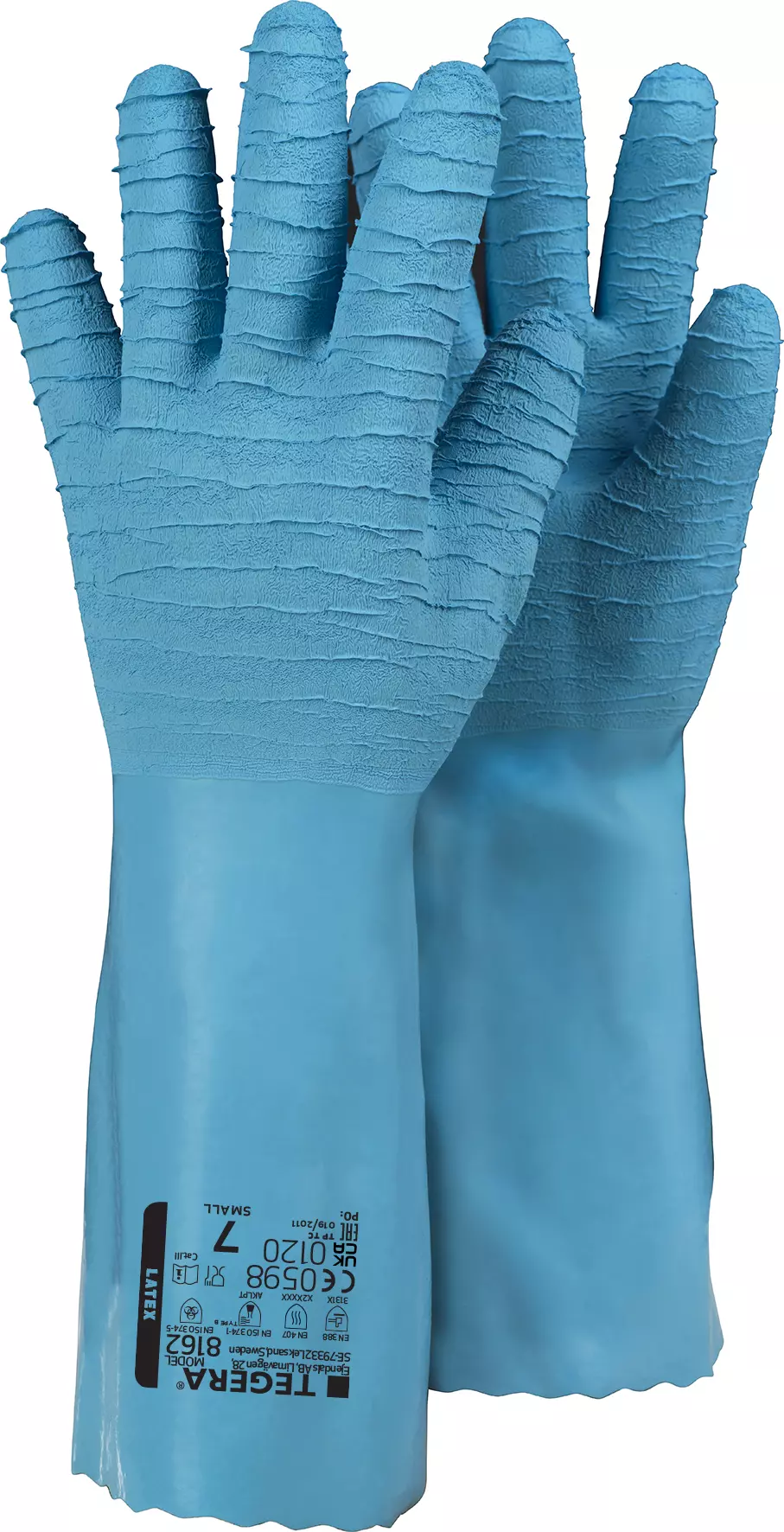
Features You'll Love

Coating Material · Latex
EN 388 · Abrasion Resistance Level 3, Puncture Resistance Level 1, Tear Resistance Level 3
EN 407 · Burning Behaviour Level X, Heat Contact Level 2, Heat Convection Level X, Radiant Heat Level X, Metal Splash Resistance Level X, Molten Metal Resistance Level X
The material applied to glove surfaces to enhance grip, protection, and durability for specific work conditions and hazards.
Provides good resistance against scraping, scratching, and rubbing on rough or abrasive surfaces.
Provides basic protection against punctures from blunt objects like splinters, not sharp points like needles.
Offers strong resistance against ripping, making the material durable against snags and tears.
This product was not tested for its resistance to open flames or burning behavior under the EN 407 standard. Therefore, it does not claim to offer protection against fire and should be kept away from naked flames.
Protects your hands when briefly handling hot objects up to 250°C. This allows you to hold an item at this temperature for at least 15 seconds, ideal for tasks like handling hot pots or equipment.
This product has not been tested for protection against convective heat, which is the transfer of heat through moving air or fluids. Therefore, no specific performance level for delaying heat transfer from a flame is claimed.
This product has not been tested for protection against radiant heat, the invisible heat felt from a distance like near a furnace. Therefore, it does not have a certified performance level for this specific type of intense heat hazard.
This product has not been tested for resistance against splashes of molten metal under the EN 407 standard. It is not intended for use in activities like welding or foundry work where this specific protection is required.
This product was not tested for resistance against molten metal splashes under the EN 407 standard. Therefore, it is not intended for use in activities like welding or foundry work where this specific hazard is present.

Glove Features · Extra Long
Extended cuff provides superior forearm protection from splashes, chemicals, and abrasions, keeping you safer and more confident.
Tegera
Chemical Protective Glove 8162, 6 pairs
Chemical Protective Glove 8162, 6 pairs
4.8 / 5
45,46 €
Price per 6 pairs
7,58 € / pair
Choose size
Shipping fee is 7,94 € for orders under 80,00 €
Features You'll Love

Coating Material · Latex
EN 388 · Abrasion Resistance Level 3, Puncture Resistance Level 1, Tear Resistance Level 3
EN 407 · Burning Behaviour Level X, Heat Contact Level 2, Heat Convection Level X, Radiant Heat Level X, Metal Splash Resistance Level X, Molten Metal Resistance Level X
The material applied to glove surfaces to enhance grip, protection, and durability for specific work conditions and hazards.
Provides good resistance against scraping, scratching, and rubbing on rough or abrasive surfaces.
Provides basic protection against punctures from blunt objects like splinters, not sharp points like needles.
Offers strong resistance against ripping, making the material durable against snags and tears.
This product was not tested for its resistance to open flames or burning behavior under the EN 407 standard. Therefore, it does not claim to offer protection against fire and should be kept away from naked flames.
Protects your hands when briefly handling hot objects up to 250°C. This allows you to hold an item at this temperature for at least 15 seconds, ideal for tasks like handling hot pots or equipment.
This product has not been tested for protection against convective heat, which is the transfer of heat through moving air or fluids. Therefore, no specific performance level for delaying heat transfer from a flame is claimed.
This product has not been tested for protection against radiant heat, the invisible heat felt from a distance like near a furnace. Therefore, it does not have a certified performance level for this specific type of intense heat hazard.
This product has not been tested for resistance against splashes of molten metal under the EN 407 standard. It is not intended for use in activities like welding or foundry work where this specific protection is required.
This product was not tested for resistance against molten metal splashes under the EN 407 standard. Therefore, it is not intended for use in activities like welding or foundry work where this specific hazard is present.

Glove Features · Extra Long
Extended cuff provides superior forearm protection from splashes, chemicals, and abrasions, keeping you safer and more confident.
Product description
TEGERA 8162, This highly durable natural latex glove offers a high level of protection and good flexibility. The cotton lining offers comfort of use and the palm texture provides a particularly good grip. The gloves have special long arms and are available in two colours, blue and orange. For orange, choose 8163